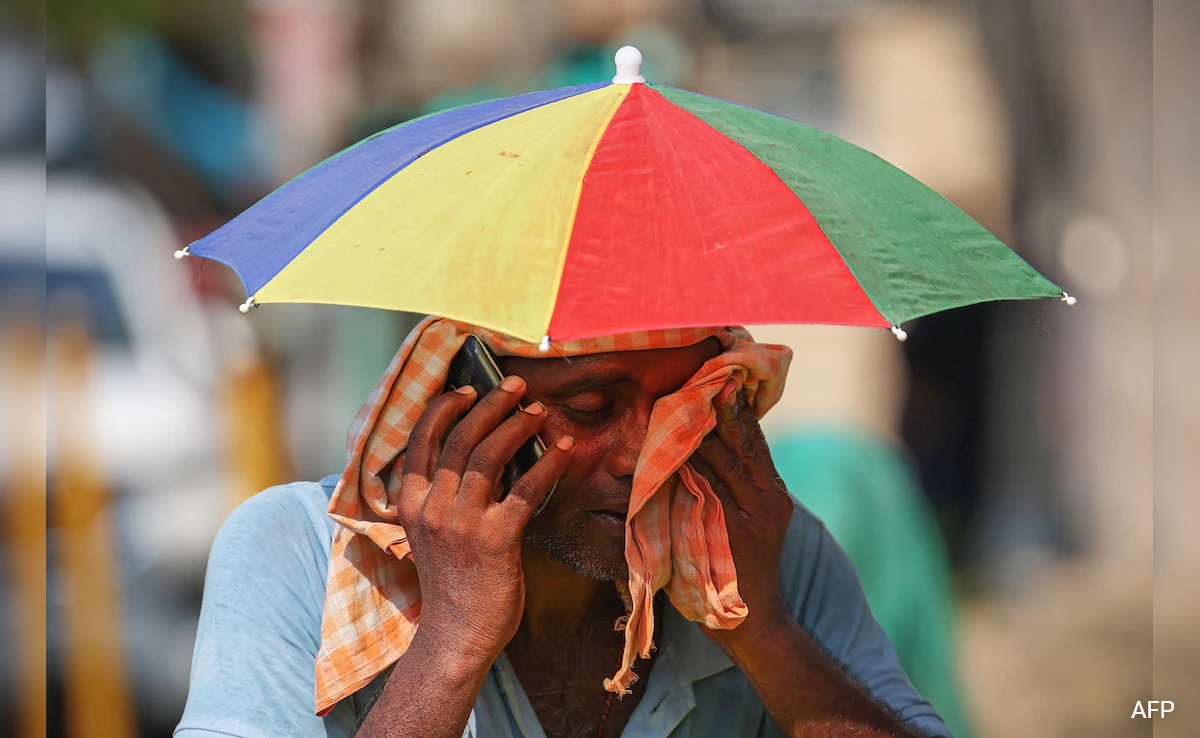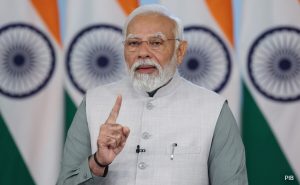2024-05-29 11:57:20

Delhi recorded India’s highest-ever temperature today at 52.3 degrees Celsius (Representational)
New Delhi:
India’s highest temperature – 52.3 degrees Celcius – was recorded today in Delhi, which is witnessing an unprecedented and intense heatwave.
The Mungeshpur weather station in northwest Delhi recorded India’s hottest-ever day today at 52.3 degrees Celsius at 2:30 pm.
Soaring temperatures triggered a spike in power consumption – the national capital hit its all-time high power demand of 8,302 megawatts (MW) as residents turned on air-conditioning to survive the rising temperatures, electricity department officials said.
Why Is It So Hot In Delhi?
The extreme heat in Delhi is part of a broader heatwave sweeping most parts of northern and central India. On Sunday, temperatures soared to 50 degrees Celsius in Rajasthan’s Phalodi – the highest temperature recorded in India since June 2019, when Churu, another city in Rajasthan, hit 50.8 degrees Celsius.
Extreme Heat Across North India
This heatwave is not confined only to the northern plains but has also impacted Himachal Pradesh, Assam, and Arunachal Pradesh. During the sixth phase of the seven-phased general elections on May 25, voters in Uttar Pradesh, Haryana, and Delhi braved extreme heat as temperatures in the capital exceeded 45 degrees Celsius. Polling booths in several areas did not have adequate facilities like water, coolers, and chairs, leading to voters fainting in the harsh conditions.
Several cities in India logged record temperatures recently. Bengal’s Cooch Behar saw temperatures reaching 40.5 degrees Celsius, while in Assam’s Silchar, it was 40 degrees. Itanagar in Arunachal Pradesh recorded 40.5 degrees Celsius. At least 17 places across Punjab, Haryana, Rajasthan, Uttar Pradesh, Gujarat, and Madhya Pradesh recorded temperatures of 45 degrees Celsius or higher.
The weather office has been issuing ‘red’ warnings for several regions, including Rajasthan, Punjab, Haryana, Chandigarh, Delhi, west Uttar Pradesh, and Gujarat, indicating a very high likelihood of heat illness and heatstrokes in all ages. The Met department also noted warm night conditions would exacerbate heat stress in UP, Punjab, Haryana, Delhi, and Rajasthan till Thursday. High night temperatures are dangerous as they prevent the body from cooling down.
The Heat Multiplier Effect
Akash Vashishtha, founder-secretary of the Society for Protection of Environment and Biodiversity, in an interview with news agency PTI, said that urban areas like Delhi-NCR become heat chambers due to land and surface concretisation, leading to a heat multiplier effect. The urban heat island effect traps heat in the lower atmosphere, significantly raising ambient temperatures. There is a need to keep ground surfaces vegetated to absorb solar radiation and reduce heat reflection to mitigate this, he said.
Impact On Low-Income Households, Children, Jobs
The heatwave is significantly burdening low-income households that have limited access to water and cooling facilities.
“Low-income households have limited capacity to adapt to extreme heat because of poor access to water and electricity. Additionally, the design and construction of informal houses often mean there is poor ventilation and little shelter from extreme heat,” Anna Walnycki of the London-based International Institute for Environment and Development said.
Outdoor workers, especially labourers working in construction, are at higher risk of heat exhaustion and heatstroke.
Delhi Lt Governor VK Saxena today directed that construction site workers be given a paid break from 12 noon to 3 pm amid the heatwave conditions in the national capital. He directed that the three-hour break will continue across all sites until temperatures dip below 40 degrees Celsius.
Heatwaves reduce children’s productivity and affect learning outcomes. Students perform worse during hot school years, and with 15% of government schools lacking functional electricity, rural education is disproportionately affected, studies showed.
Extreme heat may also lead to job losses. A World Bank report said India could account for 34 million of the projected 80 million global job losses from heat stress-associated productivity decline by 2030.
Effect On Power Grids And Water Sources
The intense heat is straining power grids and depleting water bodies, triggering drought-like conditions in various regions. Delhi recorded its highest-ever power demand of 8,302 MW amid the heatwave conditions.
Water storage in 150 major reservoirs reached a five-year low last week, triggering water shortages and impacting hydropower generation, the Central Water Commission said.
In Delhi, water levels in the Yamuna have dropped, impacting water supply. A fine of Rs 2,000 will be imposed on water-wasting activities like washing vehicles with a hose and using domestic water supply for construction and commercial purposes, the Delhi government said today.
Extreme Heat And Deaths
The World Health Organisation reported that over 1.66 lakh people died from heatwaves between 1998 and 2017, with India alone reporting 3,812 deaths due to heatwaves between 2015 and 2022.
(With input from PTI)
India's hottest Day,Delhi Highest Temperature,Heatwave and jobs
Source link
![]()



